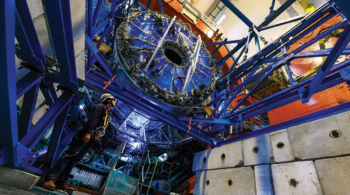 Read article 'Searching for signals from the dark universe'
Read article 'Searching for signals from the dark universe'
Searching for signals from the dark universe
At the Italian Gran Sasso National Laboratory, a novel experiment that is in search of signs of the invisible dark matter that pervades our universe reports an intriguing result.









